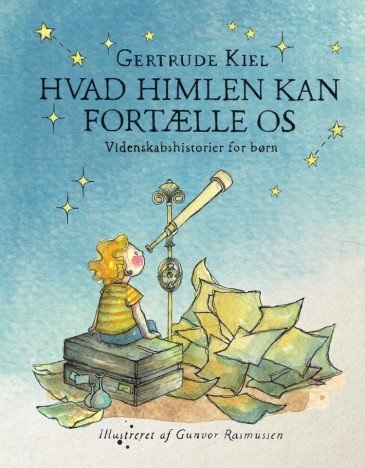Synopsis
If there is one thing that children and scientists have in common, it is their curiosity. Curiosity about the world around us, our role in it and the meaning of it all.
William is nine years old and fed up. It is school holiday and his parents are away on work trips; he is deposited at his mad aunt’s place and she has absolutely no clue about kids. But crazy aunt Gudrun knows a thing or two about science and the week at her place turns out to be filled with stories of exciting people, funny anecdotes and fascinating machines.
Shortlisted for „Wissensbuch des Jahres 2022“ (Knowledge Book of the Year) by Wissenschaft Magazine
Reviews
"From the pile (of knowledge books for children) especially one book stands out. It is Gertrude Kiel's science book, TALES FROM THE SKY (...) A boy called William has to spend a week at his grumpy star-gazing aunt's place. During the course of those days, we are taken around the entire solar system and all the big names. For example Einstein." – Steffen Larsen (Politiken) (Bogforum Magazine )
Personal note from the author
Who should read your book?
Anyone, really, who is curious about the world we live in.
Making science accessible to children is not an easy task. What inspired you to take up the challenge and write this story?
My oldest daughter was about five years old as I started writing the book. She knew about different versions of the story of creation: she had heard about the Big Bang and about God’s creation of the world – and found the latter much more comprehensible. And less worrying. I therefore felt the urge to explain the scientific version, enabling her to make her own informed choice.
And I wanted to tell the story differently: not as it is often told when we tell children about science, that is, telling them what we currently know; no rather I wanted to tell the story of how we came to know what we know today (and of how there is plenty of things that we do not know to this day). In other words, a sort of subtle guiding light in a world full of Fake News.
In your book, we among other things, hear about Astronomy and its history. Were you well-versed in this topic or did you have to do a lot of research?
Yes to both questions, really. I studied Physics at school before I started my Literature studies and I have always been passionately interested in Natural Science. That said, perhaps more in the philosophical direction, than in the scientific. My main interest always circled around the question how our discoveries about the world shaped our understanding of the world – and our place in it. I for example find it highly interesting that a scientist only has to point out that the Earth circles around the Sun (and not the other way around) – something that in effect doesn’t really change anything about our world; it remains as it always was – and nevertheless it changes everything!
When you write about science for children, there is no space for errors – it might be their first introduction to science and could therefore influence their view forever. So you need to get it right! Luckily, I could draw on the advice from a lot of different, clever scientists who helped me a lot.
In Tales from the Sky, you write about different astronomers and scientists. Have you got a favourite among them? And if you do, who and why?
I never thought of that. They all have something that attracts me. A rebellious side that drives them to go on, and not be tempted by half measures when something doesn’t seem right. Or a certain eccentricity which I somehow find sympathetic.
If I should decide on one person, then Ole Rømer is my favourite. Perhaps because he is the least famous of them all and at the same time had such a many-faceted life full of science and adventure that lead to really everyday-like, practical discoveries.














